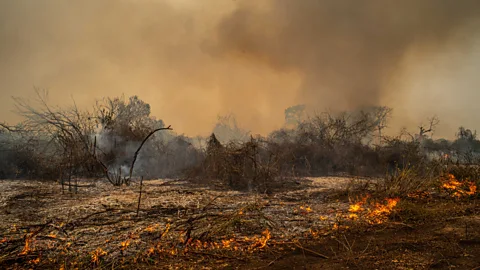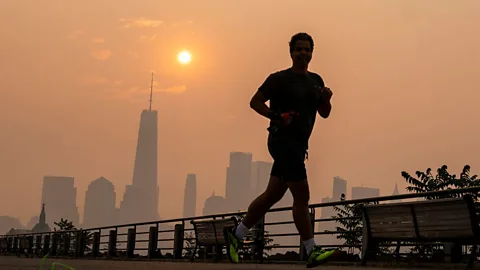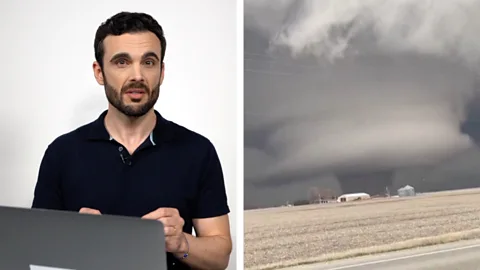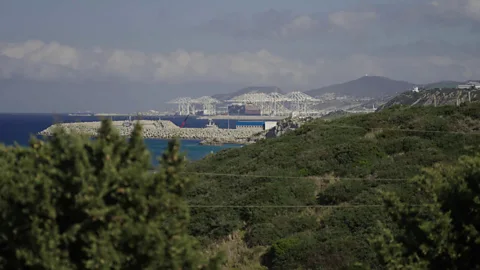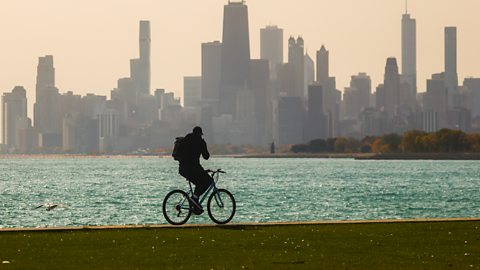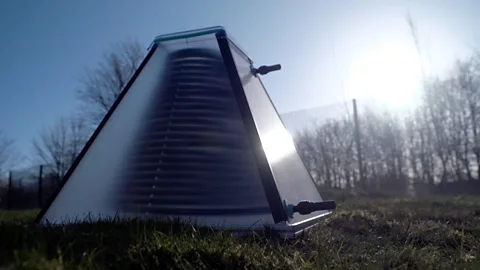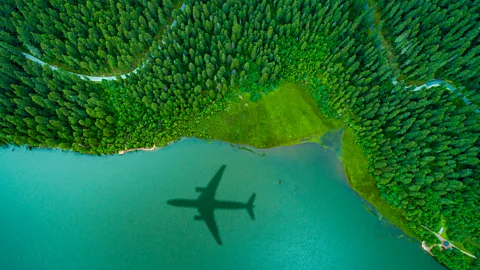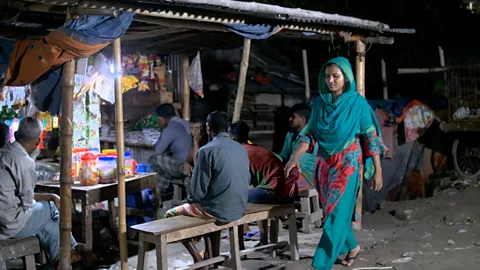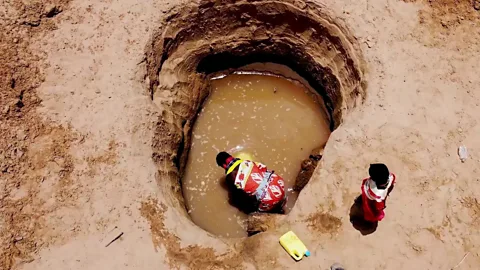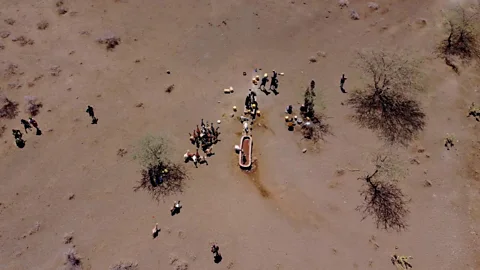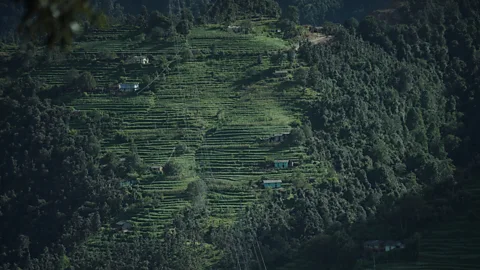A tenacious nation built on shape-shifting land
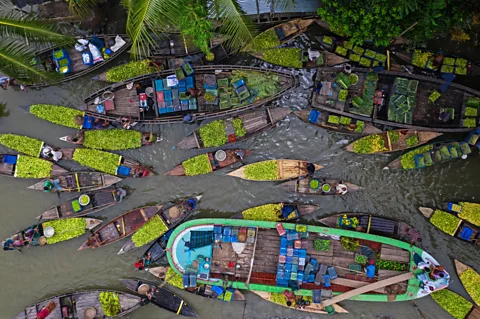 Mohammad Saiful Islam/Getty Images
Mohammad Saiful Islam/Getty ImagesIn Bangladesh, natural disasters seem to be the only constant. Living with such unpredictability means that resilience and adaptability have become the nation's default settings.
In the highland hinterlands of subtropical Sylhet, a city in north-eastern Bangladesh known for its lush tea gardens, getting to school requires more than just waking up on time.
"I we used to cross a bridge and it got washed away every other year," said Dr Monjour Mourshed, professor of sustainable engineering at Cardiff University who grew up in Bangladesh. "We [the village children] were used to it; we'd just find a different path."
But what's more fascinating than the constantly altering school route is the calmness with which he acknowledged it. Mourshed's experience is the norm, not the exception, as Sylhet's geomorphology is subject to frequent change. "A mound of land in the floodplain of the Surma River... Sylhet inhabits nature-on-the-move," writes Dr David Ludden, professor of history at New York University and former president of the Association for Asian Studies, in a 2003 paper that underscores the temporal nature of the landscape. "Tectonic shifts continue to lift the highlands and depress the deepest-flooding 'haor' basins [large, shallow, saucer-shaped depressions]... Thumping earthquakes periodically destabilise water's established pathways."
 Mohammad Saiful Islam/Getty Images
Mohammad Saiful Islam/Getty ImagesBangladesh as a whole is "nature-on-the-move", its fluid geography the result of one of the most dynamic and extensive river networks in the world. The deltaic nation is literally a by-product of the rivers' processes: a giant sandbox created by millennia of alluvial deposits by the ever-flowing waters of the mighty Brahmaputra-Jamuna, Pa (the Ganges) and Meghna rivers. Approximately 80% of the nation consists of floodplains, and a new island – Bhasan Char, now the controversial home of thousands of Rohingya refugees – was formed by enormous loads of Himalayan silt from the Meghna River in the past 20 years.
Water, and reverence for its creative and destructive powers, is so intrinsic to the nation that the Jatiyo Sangshad Bhaban (the Bangladesh National Parliament building) in Dhaka is surrounded on three sides by an artificially constructed lake as testimony to the country’s riverine beauty. But the stunning monument, a popular attraction that has been called one of the greatest architectural achievements of the 20th Century, holds deeper cultural symbolism, according to Khondker Neaz Rahman, who has worked with the Bangladesh government and United Nations Development Programme on urban and regional planning.
"In Bangladesh, we see water as a sacred purifying element," he said. "Water purifies you during ablution as a Muslim. If you are Hindu, your house is sprinkled with Ganga water. Buddhists cross a bridge or place a fountain in their space of meditation." He explained that crossing over water before entering the supreme legislative body is believed to create a conducive mindset.
Water and nature are inextricable from life in the small but densely populated nation – perhaps understandably so. "Look out the window when your plane crosses Bangladesh during monsoon," urged Rahman, "You won't see rivers interrupting land. Our country is the space between rivers."
And life, it seems, is lived out in the space between extreme events of nature.
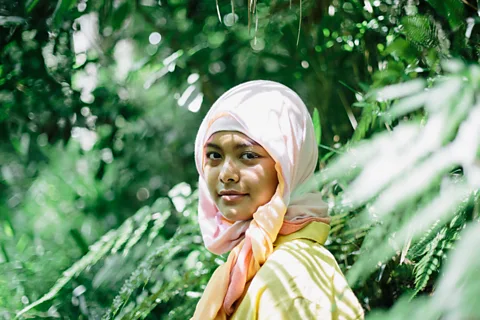 Eric Miura/Getty Images
Eric Miura/Getty ImagesIn the past three decades, Bangladesh has braved more than 200 natural disasters, by some estimates. Its location at the triangular head of the Bay of Bengal, low-lying topography, susceptibility to tropical cyclones andvulnerability to floods is worsened by population density and rapid urbanisation. Its extreme vulnerability to climate change creates droughts at one end and erratic rainfall on the other; floodplain sediments may experience liquefaction during earthquakes; and salinity intrusion poses an existential threat to agriculture and available drinking water. Travellers will see navigable waterway networks serving as default (and sometimes, primary) methods of transportation, often crowded with both modern ferries and historical paddlewheel steamers called Rockets.
You may also be interested in:
• The nation learning to embrace flooding
In 2020, nearly 40% of the nation was submerged by floods, leaving 1.5 million Bangladeshis displaced. This was almost in conjunction with super cyclone Amphan in May, which cost an estimated $13.2bn in damage. Sayda Yesmin, chief executive of the NGO Association For Alternative Development (AFAD), works with families in the flood-ravaged district of Kurigram in northern Bangladesh. "It's the fifth time they've been displaced," she said.
And yet, they rebuild. Displaced but not disillusioned, Bangladeshis seem to acknowledge – perhaps even appreciate – the duality and complexity of nature. Learning to live in harmony with natural disasters is anancient preoccupation and visitors will be mesmerised by poignant, generations-old Bhatiyali folk songs both romanticising and reckoning with life on the river. "Naai ko dauriaar paari/Shaabdhaane chaalaaiyo maajhi," (The river has no limits/Steer it most cautiously, boatman) proclaims one of the most iconic songs of the genre.
"Disasters are always man made," said Rahman, "They can never be natural. When we meddle with nature without understanding it and do something wrong, we blame nature." In Bangladesh, there seems to be an innate acknowledgement of the overwhelming power of nature’s force and man’s need to live in tandem with its whims.
Some experts believe Bangladeshis' adaptability and resiliency comes from their unpredictable terrain. "I have this wild theory: geography shapes people's psyche and ethos," said Dr Shafiul Azam Ahmad, water and sanitation specialist at the Water and Sanitation Program, World Bank, from 2000-2008, international consultant for the World Bank from 2015-2016 and now a freelance regional consultant for Bangladesh, Sri Lanka and Nepal. "When one bank of a river tumbles under the surging floodwater, another shoal rises on the opposite side. Flora and fauna revive with new vigour soon after. And so do people. You cannot battle against mighty rivers, but you can be resilient and coexist with nature's vagaries."
Rinita Rezwana, a Dhaka resident, spoke with quiet dignity when I called her following the 2020 flood, bracing myself for what I thought would be a tragic exchange. To my surprise, I could almost hear her smile through the phone. "My people are resilient, Aysha," she said, "Villagers make bridges to stay connected to the mainland. Unused bales of fodder or straw become stepping-stones... There's lots of bamboo, so they build 'stilts' for their homes, [known as] a macha, or raised refuge."
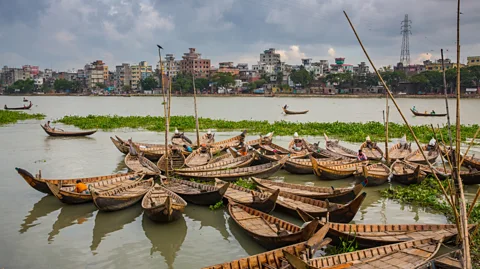 Md Shanjir Hossain/Getty Images
Md Shanjir Hossain/Getty ImagesThese resilient houses dotting Bangladesh's terrain, built using materials like timber and bamboo, embody the fluidity of life. They're sometimes built in the wake of a disaster, as the wet season, when materials can be transported by boat, heralds a flurry of building. Until recently, houses had small ponds next to them, the excavated soil used to raise the house and the pond serving as a water reservoir for droughts. And a centuries-old floating-farm-bed technique using hyacinth plants increases arable land while allowing farmers to cultivate crops throughout the rainy season. The beds rise and fall with the water.
Much of Bangladeshi resilience is steeped in this understanding of nature being larger than all of us and working with – not against – it. Hasin Jahan, country director of the NGO WaterAid, explained how communities naturally adapt to confront crises. "When you know it's inevitable, you plan for it, don't you">Why hurricane season this year will not be normal.

